Autumn brings crisp air, vibrant foliage, and often, powerful winds. For balcony gardeners, these seasonal shifts present a unique challenge: the notorious “balcony wind tunnel.” Your carefully arranged fall containers, brimming with chrysanthemums, ornamental kale, and pansies, can become casualties of gusty storms, leaving behind overturned pots, broken stems, and disheartening mess. You want your small-space garden to thrive, not just survive, through the blustery months. This guide helps you safeguard your cherished plants and prevent wind-related disasters. You will discover practical, actionable strategies to fortify your fall containers against autumn’s strong breezes, ensuring your balcony remains a joyful, protected oasis.
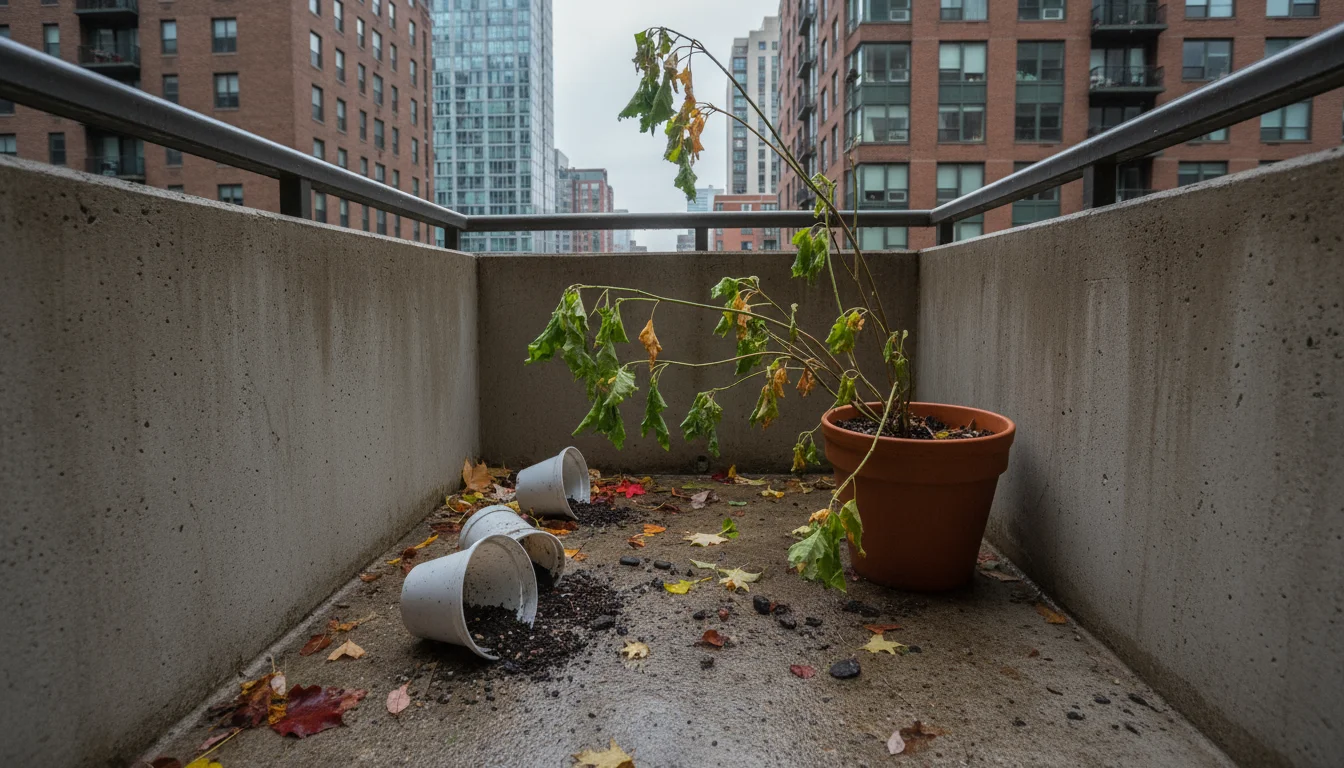
Understanding the Balcony Wind Tunnel Effect
Balconies often face stronger winds than ground-level gardens. Buildings create a funneling effect, accelerating wind speeds and directing powerful gusts at your outdoor space. This phenomenon, known as the “balcony wind tunnel,” subjects your plants to constant stress and potential damage. You may experience direct physical harm, desiccation, and wind chill. Understanding these specific threats helps you implement effective protection strategies.
Direct physical damage occurs when strong winds literally knock over pots, break stems, or tear leaves. A lightweight plastic pot, even with a robust plant, stands little chance against a sudden squall. Your plants’ structural integrity weakens, making them more vulnerable to subsequent weather events. Imagine a sturdy mum, its branches snapping under the strain, or delicate pansy blooms shredded by abrasive winds. This damage not only looks unsightly but also stresses the plant, diverting energy from growth and flowering to repair.
Desiccation, or drying out, poses another significant threat. Wind accelerates evaporation from both plant leaves and soil surfaces. Plants lose moisture much faster than they would in calm conditions. This increased transpiration means your plants require more frequent watering, and even then, they can struggle to keep up. Signs of desiccation include wilting, browning leaf tips, and stunted growth. The plant’s root system works overtime, drawing water from the soil, but if the wind’s drying effect outpaces water uptake, your plants suffer.
Wind chill also affects your fall containers, especially as temperatures drop. Just as wind makes you feel colder, it lowers the perceived temperature for your plants. This exacerbates cold stress, potentially causing frost damage earlier in the season or reducing the hardiness of less tolerant species. Your plants experience an environment several degrees colder than the actual air temperature, impacting their ability to photosynthesize and maintain cellular function. Combining wind chill with desiccation creates a double threat, making your plants more susceptible to disease and overall decline.
Urban environments intensify these challenges. Tall buildings, narrow passages between structures, and concrete surfaces all contribute to turbulent air currents. Reflective surfaces can amplify heat and light, but also exacerbate wind effects. Your balcony, often suspended with open exposures, acts like a sail catching every gust. Recognising these specific environmental factors empowers you to choose the right preventative measures. You do not just contend with general wind; you face a concentrated, often unpredictable force. Addressing this unique challenge head-on ensures your autumn garden flourishes.
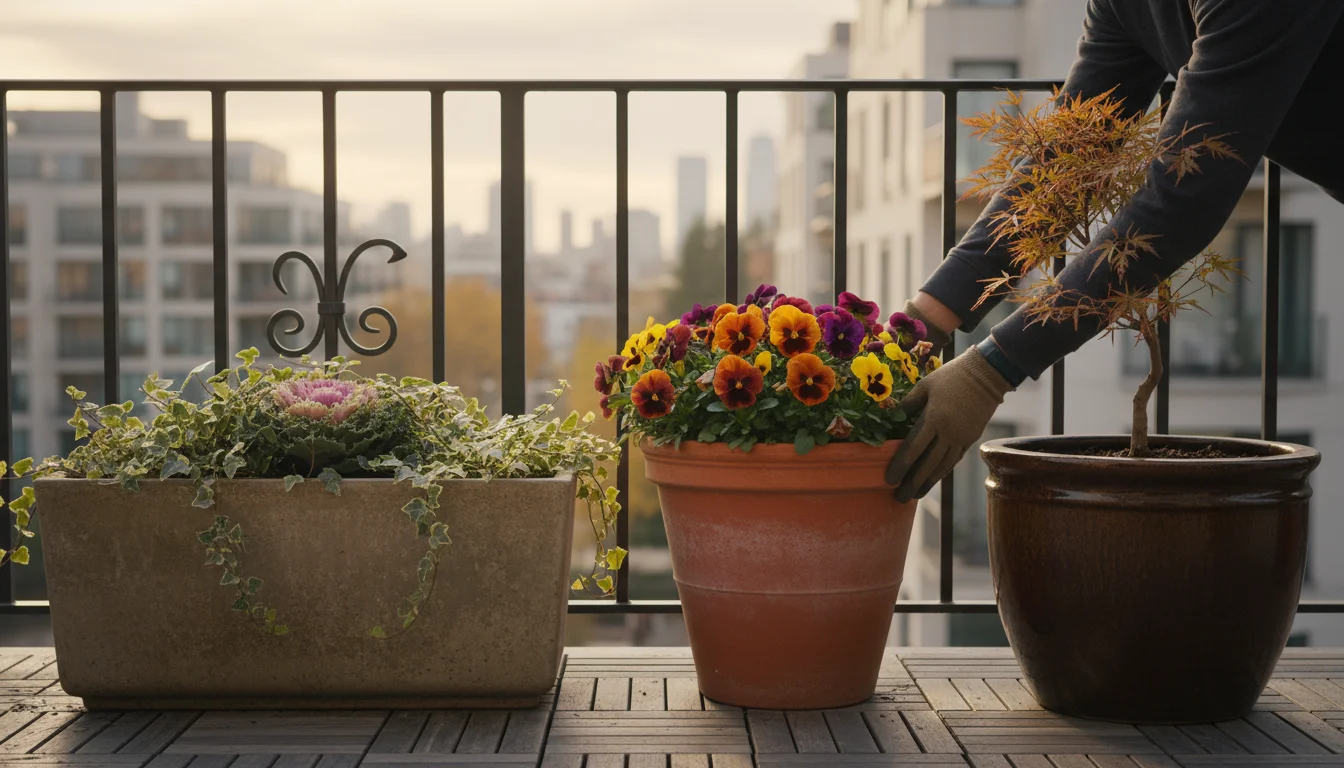
Choose Heavy, Stable Containers for Superior Anchorage
The first line of defense against wind damage involves selecting the right containers. Lighter pots are easily toppled by gusts, sending your plants, soil, and hard work sprawling across your balcony. Opting for heavier, more stable materials provides a fundamental level of wind resistance. This choice significantly reduces the risk of your cherished fall containers becoming airborne during a storm.
Consider materials such as terracotta, concrete, stone, or thick, glazed ceramic. Terracotta pots, while beautiful, absorb water and can become quite heavy when wet, adding stability. Concrete and stone planters offer inherent weight and density, making them extremely difficult to overturn. For example, a 15-inch concrete planter can weigh upwards of 40-50 pounds when empty, becoming even heavier once filled with soil and plants. This substantial mass acts as a natural anchor, keeping your plants firmly grounded.
Even robust plastic or fiberglass containers, known for their durability and lighter weight, present options when chosen strategically. Look for designs with wider bases and lower centers of gravity. A squat, wide-rimmed plastic pot offers more stability than a tall, narrow one of the same material. For instance, a shallow bowl-shaped planter with a 20-inch diameter provides a broader footprint for wind resistance compared to a slender upright cylinder, even if both hold the same volume of soil. Some manufacturers produce heavy-duty plastic containers specifically designed for outdoor use, featuring thicker walls and reinforced bases that add a surprising amount of stability.
Size also plays a crucial role. Larger containers naturally possess more mass and a wider base, enhancing their stability. A larger volume of potting mix and a more developed root system also contribute to the overall weight. For your fall display, consider planting several smaller, wind-resistant plants together in one large, heavy container rather than scattering individual plants in small, light pots. A 24-inch diameter container filled with a mix of mums, ornamental cabbage, and trailing ivy creates a visually appealing and structurally sound arrangement that resists wind far better than three separate 8-inch plastic pots.
If you prefer the aesthetic of lighter materials or already own them, you can still increase their stability. Place a layer of heavy rocks, bricks, or even concrete pavers at the bottom of the container before adding your potting mix. This adds significant ballast, lowering the pot’s center of gravity without compromising drainage. Ensure these added weights do not block drainage holes. For instance, you might place a few flat landscape bricks at the base of a lightweight resin planter, then cover them with a layer of gravel before adding your soil. This simple addition can prevent your pot from becoming a projectile in high winds, keeping your autumn display intact and beautiful.

Implement Strategic Weighting and Anchoring for All Pots
Even with heavy containers, or if you use lighter pots, strategic weighting and anchoring provide essential protection against strong winds. You want to make your containers as stable as possible, preventing them from tipping, sliding, or blowing away. This involves both internal and external methods, ensuring your fall display remains exactly where you place it.
Internally weighting pots is a simple yet effective technique. For lighter containers, you can add dense, inert materials to the bottom. Consider placing a layer of gravel, small rocks, or even a few bricks before adding your potting mix. This ballast significantly lowers the pot’s center of gravity, making it much harder for wind to overturn. Ensure these materials do not obstruct drainage holes; a layer of landscape fabric or a few strategically placed pieces of broken pottery can prevent soil from washing out while maintaining proper drainage. For instance, if you have a plastic planter that tends to be unstable, add about 2-3 inches of washed gravel to its base. This can increase the overall weight by several pounds, providing noticeable stability.
Grouping your pots offers mutual protection. When you arrange several containers close together, they create a collective mass and a mini windbreak for each other. Taller plants can shield shorter, more delicate ones. Place your heaviest, most stable pots on the windward side of the grouping, allowing them to bear the brunt of the gusts. For example, you might cluster three large ceramic pots filled with sturdy mums alongside two smaller pots holding pansies. The larger pots act as a physical barrier, reducing the direct wind force on the smaller, more vulnerable containers. This strategy not only enhances stability but also creates a fuller, more impactful visual display.
External anchoring provides a direct way to secure pots to your balcony structure. Use bungee cords, strong twine, or rope to tie pots to railings, sturdy furniture, or other fixed points. Loop the cord around the base of the pot and then securely fasten it to a fixed element. For very tall or top-heavy plants, consider using stakes driven into the soil and then tied to the plant’s main stem or the container itself. You can find specialized pot clamps or holders designed to attach containers directly to railings, providing a secure and aesthetically pleasing solution. A common method involves using heavy-duty zip ties to attach the drainage holes of a pot to the bottom rung of a metal balcony railing. This keeps the pot from sliding or tipping, even in strong winds.
Another excellent external weighting option involves using decorative stones or pavers on the soil surface of your pots. While the primary goal is often aesthetic, these can add extra stability by increasing the overall weight of the container. A layer of river rocks or decorative pebbles not only looks appealing but also helps to suppress weeds and reduce moisture evaporation, providing multiple benefits. Just ensure the added weight does not compact the soil excessively or impede the plant’s growth. For instance, a 1-2 inch layer of medium-sized river rocks in a 12-inch pot can add several pounds, helping to hold the soil and plant in place during a storm. Combining these internal and external methods provides comprehensive protection, ensuring your fall container garden withstands even the fiercest autumn gusts.
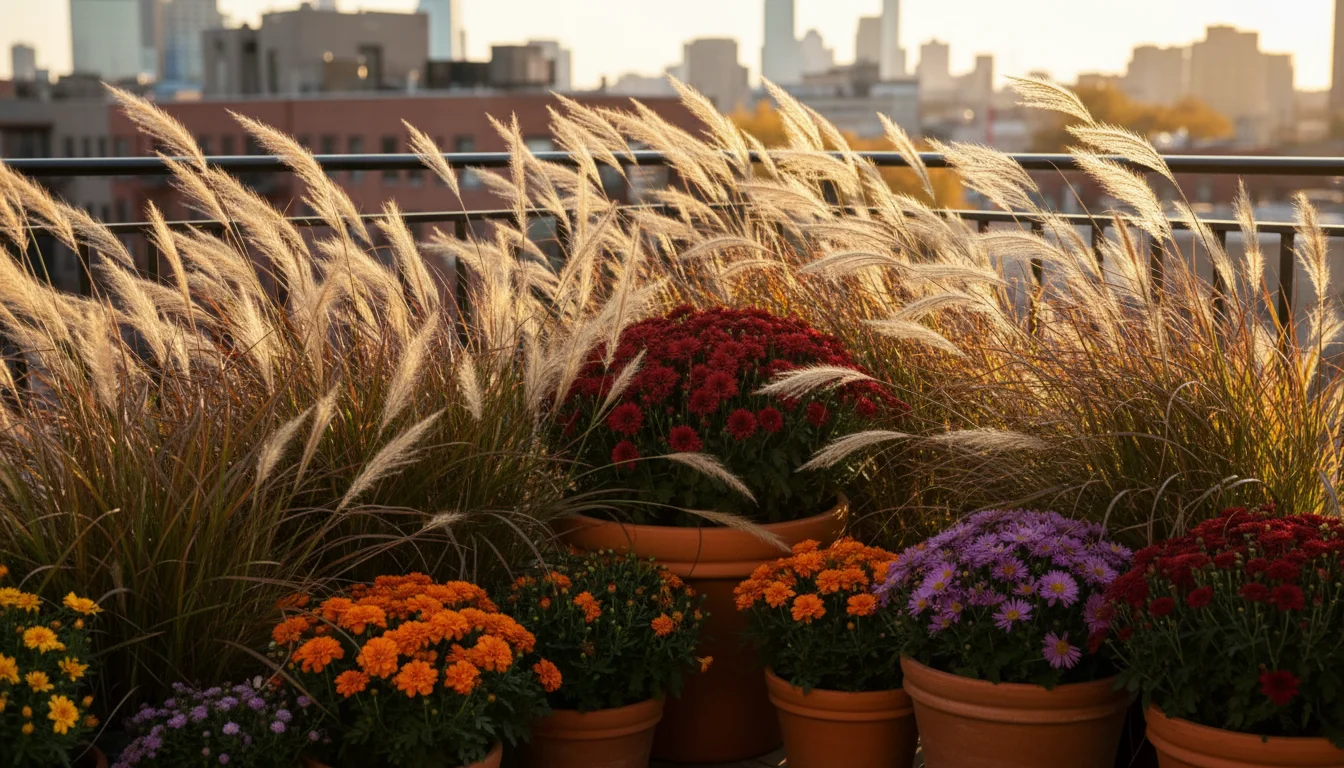
Design a Living Windbreak with Resilient Fall Plants
Incorporating specific plant choices and strategic arrangements creates a “living windbreak” for your balcony, reducing wind impact while adding beauty to your fall container garden. Certain plants tolerate windy conditions better than others due to their physical structure and growth habits. You can leverage these resilient species to protect more delicate plants and enhance the overall stability of your containers.
Selecting plants with strong, flexible stems and compact growth forms is key. Avoid plants with broad, delicate leaves or brittle branches, as these are more prone to tearing and breaking in high winds. Instead, look for varieties that are naturally adapted to exposure. Ornamental grasses, such as fountain grass (Pennisetum) or dwarf sedges (Carex), possess slender, flexible blades that sway with the wind rather than resisting it. Their dense root systems also contribute to overall container stability. For example, a clump of ‘Hameln’ fountain grass in a pot provides an excellent buffer against wind for smaller plants placed nearby.
Many popular fall annuals also offer good wind resistance. Chrysanthemums, with their sturdy stems and compact, mounded growth, handle gusts well. Ornamental kale and cabbage feature thick, waxy leaves that resist tearing, and their low-growing, dense rosettes provide good ground cover and stability. Pansies and violas, while smaller, are remarkably tough and low to the ground, minimizing their wind exposure. You can use these plants as a protective layer around more sensitive specimens.
Strategic plant arrangement within your containers and across your balcony significantly enhances wind protection. Place taller, sturdier plants on the side facing the prevailing wind. These plants act as a natural screen, slowing down the wind and creating a calmer microclimate for shorter, more vulnerable plants behind them. Imagine a large container holding a tall ornamental grass, with smaller pots of pansies or violas nestled closely behind it. The grass absorbs the initial impact of the wind, reducing its force on the delicate blooms.
When designing your fall containers, aim for density. A tightly packed container with multiple plants provides more collective resistance than sparse plantings. The interwoven foliage and stems create a barrier that disperses wind energy. For instance, combine a central mum with trailing ivy and surrounding ornamental kale. The ivy drapes over the pot’s edge, helping to hold soil in place, while the kale and mum create a dense, wind-resistant mass. This dense planting also helps to stabilize the soil, reducing erosion from wind. You essentially create a living barrier, harnessing nature to protect your garden. This not only makes your balcony more resilient but also creates a lush, abundant autumn display. You can achieve both beauty and practicality by thoughtfully choosing and arranging your fall plants.
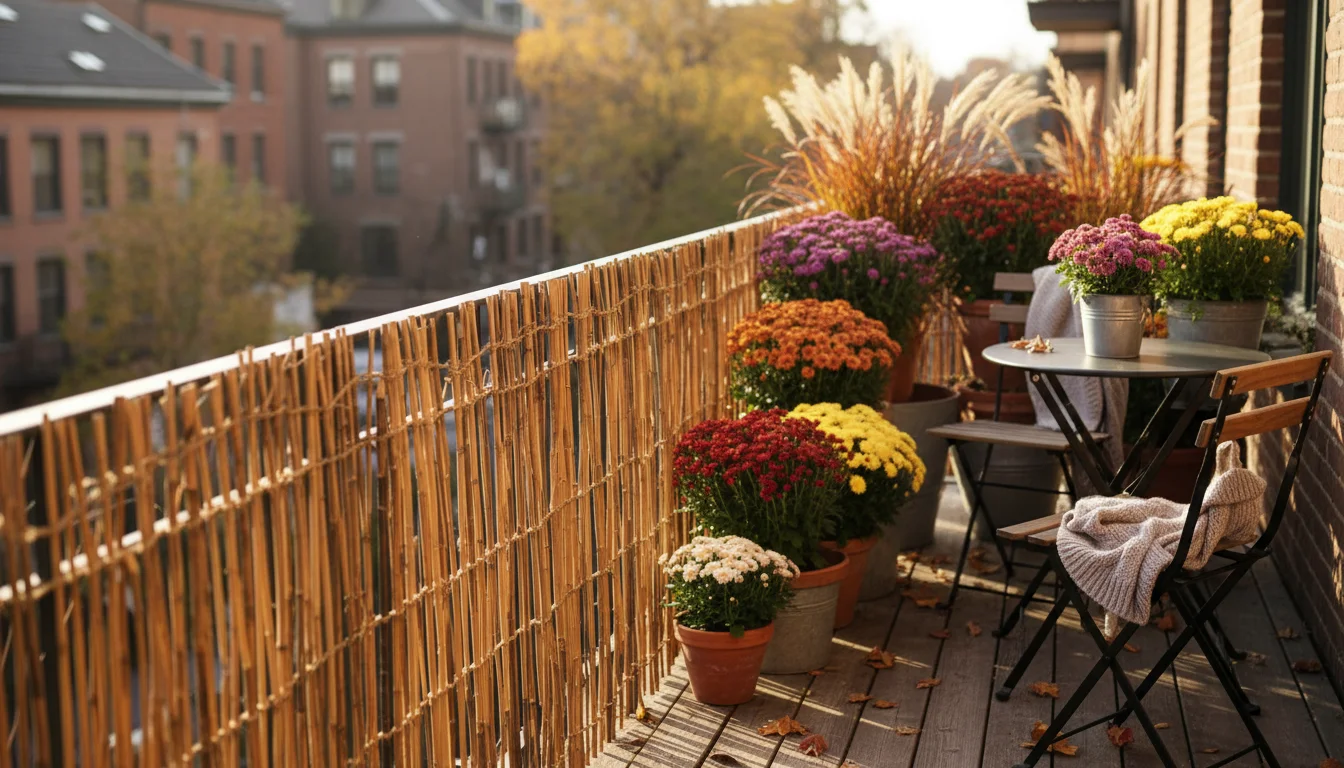
Constructing Effective DIY Windbreaks for Your Balcony
Beyond plant selection and container choice, building physical windbreaks provides a robust solution for protecting your fall containers. A DIY windbreak for apartment balcony spaces can dramatically reduce wind speeds, creating a calmer, more hospitable environment for your plants. You can implement various materials and designs, adapting them to your specific balcony setup and aesthetic preferences.
The key to an effective windbreak is to slow down, but not completely block, the wind. A solid, impermeable barrier can create undesirable turbulence on the leeward side, causing more problems than it solves. Aim for materials that are porous, allowing about 40-50% airflow. This diffusion dissipates the wind’s energy without creating harmful eddies. Think of it as filtering the wind rather than stopping it dead.
Bamboo screens or lattice panels offer excellent options. These materials are lightweight, relatively inexpensive, and easily sourced from garden centers or home improvement stores. You can secure bamboo screens directly to your balcony railing using zip ties or heavy-duty wire. Their natural aesthetic blends well with a garden setting. Lattice panels, often made of wood or vinyl, provide a more structured look. You can paint them to match your balcony decor or train climbing plants like ivy or jasmine (if suitable for your climate and fall season) to grow on them, creating an even more integrated living windbreak. A typical bamboo screen, approximately 6 feet long and 3-4 feet high, can reduce wind speed by up to 50% immediately behind it, providing substantial relief for your plants.
Fabric screens or shade cloths present another flexible and affordable solution. Look for UV-stabilized, heavy-duty outdoor fabrics that can withstand prolonged exposure to the elements. These often come with grommets, making them easy to attach to railings or custom-built frames. You can also use temporary solutions like burlap or canvas tarps during particularly stormy periods, removing them when the weather improves. For instance, attaching a piece of dark green shade cloth to the lower half of your balcony railing can provide excellent protection while maintaining some visibility and allowing filtered light to reach your plants. This type of windbreak is particularly effective because it distributes the wind’s force over a larger area, preventing a concentrated blast.
For more durable or semi-permanent solutions, consider transparent acrylic or polycarbonate panels. These offer excellent wind protection while preserving your view and maximizing light exposure. They typically require a more secure mounting system, often involving brackets or clamps attached to the railing. While a greater initial investment, these panels offer superior long-term performance and aesthetic appeal. You might install clear acrylic sheets, 2-3 feet high, along the length of your railing, providing an almost invisible barrier against the wind. This significantly enhances your balcony’s comfort for both you and your plants. When constructing your windbreak, always ensure it is securely fastened to your balcony structure to prevent it from becoming a hazard itself in high winds. Regularly check the fastenings for wear and tear, especially after severe weather.
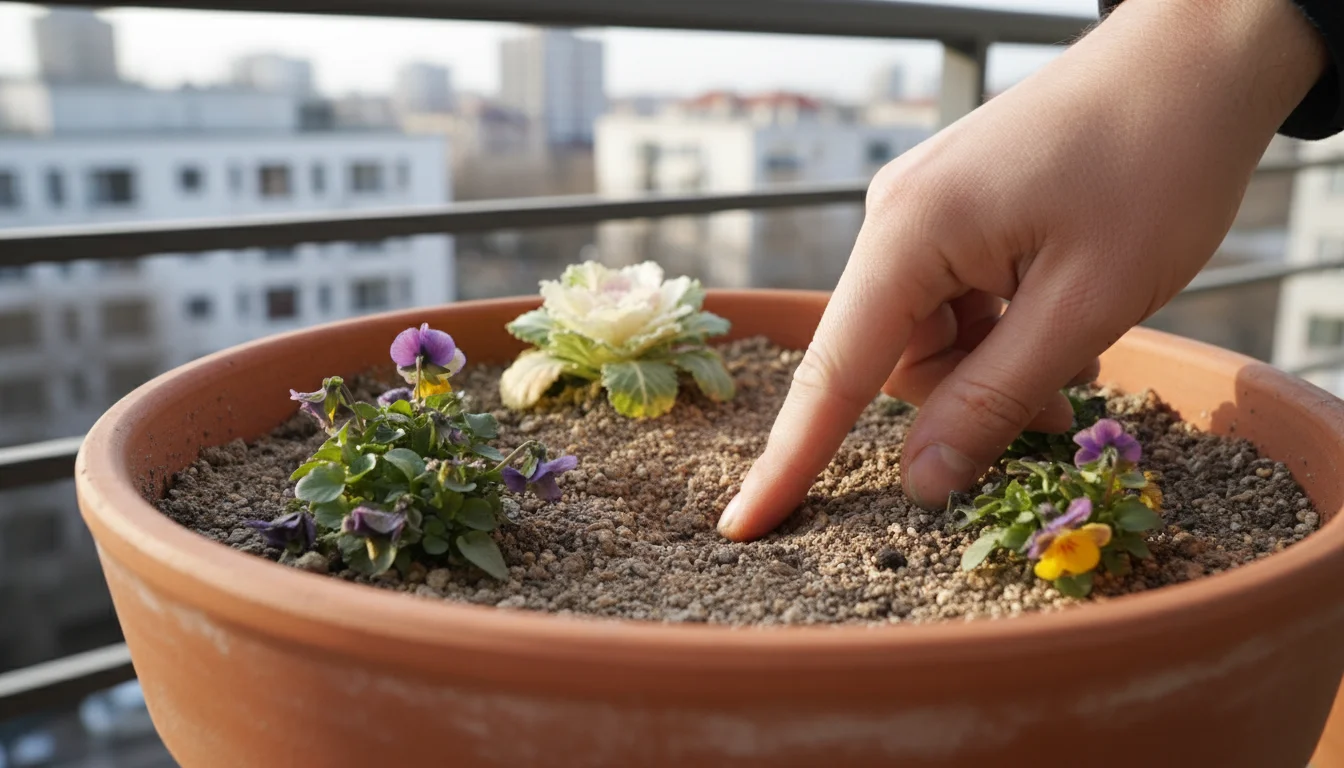
Optimizing Water and Soil for Wind-Stressed Containers
Wind not only threatens the physical stability of your containers but also dramatically impacts your plants’ physiological health. It accelerates moisture loss from both leaves and soil, placing significant stress on your fall container garden. You need to adjust your watering regimen and choose the right soil mix to help your plants withstand these drying conditions. Effective moisture management becomes a critical component of balcony wind protection.
Wind acts as a powerful dehydrator. It strips moisture from plant foliage through a process called transpiration and rapidly evaporates water from the soil surface. This means your wind-exposed containers dry out much faster than those in sheltered locations. You will likely need to water your plants more frequently. Instead of sticking to a rigid schedule, check the soil moisture daily by sticking your finger about an inch or two deep. If it feels dry, it is time to water. For example, a container that might need watering every three days in calm conditions could require daily watering during a windy spell. Consistent moisture prevents your plants from experiencing drought stress, which makes them even more vulnerable to wind damage.
Choosing the right potting mix significantly helps in moisture retention. A high-quality, well-draining potting mix is essential for container gardening, but for windy balconies, you might want to enhance its water-holding capacity. Look for mixes that contain amendments like coco coir, vermiculite, or perlite. Coco coir is particularly effective at absorbing and retaining water, slowly releasing it back to the plant roots. Vermiculite also improves moisture retention while keeping the soil light. These components help the soil act like a sponge, holding onto precious water longer. Avoid heavy garden soil, which compacts easily and offers poor drainage, leading to root rot. A good quality potting mix for wind-exposed containers might include a blend of peat moss, perlite, and coco coir, providing both aeration and excellent moisture retention.
Mulching the soil surface in your containers is another highly effective strategy for conserving moisture and protecting roots from temperature fluctuations. A layer of mulch acts as a barrier, reducing direct wind exposure to the soil and slowing down evaporation. Use organic mulches like shredded bark, wood chips, pine needles, or coco coir discs. These materials also decompose over time, adding beneficial organic matter to your soil. Non-organic options like decorative pebbles or small river rocks also work well, adding weight to the container while preventing soil from blowing out and retaining moisture. For instance, a 1-2 inch layer of fine cedar mulch on top of your potting mix can reduce water evaporation by up to 30%, meaning you water less frequently and your plants stay hydrated longer.
Finally, ensure your containers have adequate drainage holes. While you want the soil to retain moisture, you never want it to become waterlogged. Excess water must be able to escape freely to prevent root rot. If a pot lacks sufficient drainage, roots suffocate, making the plant weak and unable to withstand environmental stresses, including wind. A healthy root system is the foundation of a resilient plant. Combining smart watering, moisture-retentive soil, and effective mulching gives your fall containers the best chance to thrive against the drying forces of balcony winds, keeping your plants hydrated and robust.

Essential Maintenance and Troubleshooting for Windy Balconies
Even with proactive measures, a balcony garden in a windy environment requires ongoing attention. Regular maintenance and a strategic approach to troubleshooting ensure your fall containers remain protected and healthy throughout the autumn season. Your vigilance makes all the difference in preventing minor issues from escalating into significant problems.
Regularly inspect your containers and plants, especially after a strong gust or storm. Check for any loosened anchors, ties, or windbreak components. Heavy winds can strain ropes, snap zip ties, or dislodge screen panels. Re-tighten, replace, or re-secure any compromised elements immediately. A quick walk-through of your balcony garden after a blustery night can prevent a pot from tumbling over in the next storm. Look for signs of stress on your plants, such as bent stems, torn leaves, or wilting. Address these promptly by pruning damaged parts to encourage new, healthy growth, or by increasing watering if desiccation is evident.
Adjust your windbreak solutions as needed. Autumn weather can be unpredictable, with wind directions shifting. If you have temporary screens or fabric windbreaks, you might need to reposition them to offer maximum protection against the prevailing wind. For instance, if a storm is approaching from the east, ensure your windbreak offers sufficient coverage on that side of your balcony. You can also augment existing barriers with additional temporary measures, like placing a large piece of plywood or heavy furniture on the windward side during particularly severe weather warnings. This adaptability ensures your plants always receive optimal protection.
Troubleshooting plant health in windy conditions often involves assessing water levels and nutrient uptake. If plants show signs of nutrient deficiency, even with regular fertilizing, consider that wind stress can make it harder for plants to absorb nutrients effectively. A slow-release granular fertilizer applied at the beginning of the fall season can provide a steady supply of nutrients, helping plants recover from stress more efficiently. Ensure consistent watering, as nutrient uptake relies on water. If a plant appears severely damaged, sometimes replacing it with a hardier, more wind-resistant variety for the season is the most practical solution, particularly for annuals.
Embrace eco-friendly and sustainable practices in your maintenance routine. When replacing damaged materials, opt for durable, recyclable, or recycled options. For example, choose metal stakes over plastic, or repair rather than discard broken pots. Collect rainwater for irrigation to supplement your watering, reducing reliance on municipal water and benefiting your plants with soft, chlorine-free water. Composting any plant debris or spent annuals reduces waste and creates nutrient-rich material for future gardening endeavors. By consistently maintaining your protective measures and practicing sustainable habits, you build a resilient, beautiful balcony garden that thrives season after season, weathering any autumn storm.
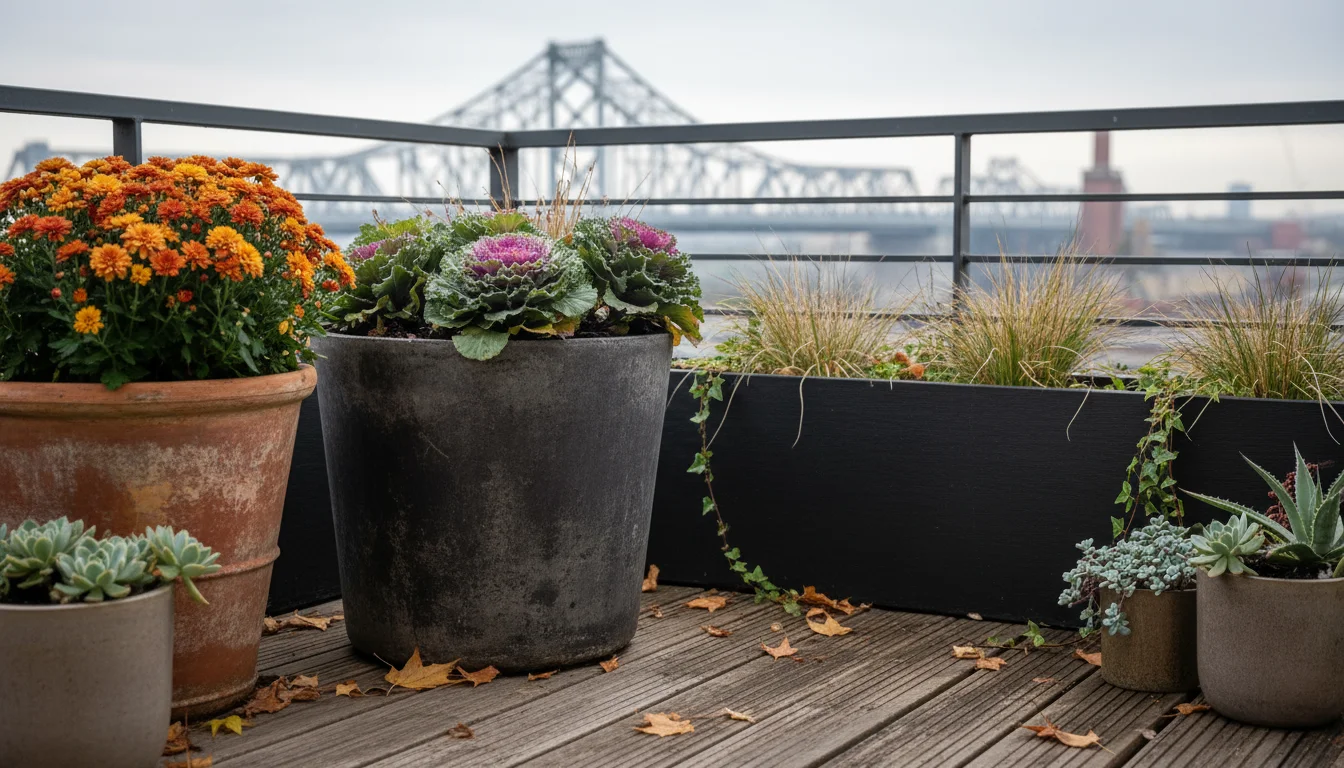
Sustainable Practices for a Resilient Balcony Garden
Creating a resilient balcony garden involves more than just protecting it from the wind; it also means embracing sustainable practices that benefit both your plants and the environment. As a small-space gardener, you have a unique opportunity to make impactful eco-friendly choices. These practices contribute to a healthier planet and a more robust garden that stands strong against autumn’s challenges.
Durability and reuse stand as cornerstones of sustainable gardening. When selecting containers and windbreak materials, prioritize long-lasting options. Heavy ceramic, concrete, or well-made fiberglass pots, while a greater initial investment, endure for many seasons, reducing the need for frequent replacements. For DIY windbreaks, consider materials like treated lumber, high-quality bamboo, or sturdy metal frames that withstand years of outdoor exposure. When a container or material reaches the end of its life, explore options for repurposing. Old plastic pots might become drainage layers in new, larger containers, or broken terracotta shards can cover drainage holes. This approach minimizes waste and conserves resources, aligning with the ethos of low-maintenance and responsible gardening.
Water conservation is particularly vital in windy conditions. As discussed, wind accelerates water loss. Beyond mulching and using moisture-retentive soil, consider collecting rainwater. A small rain barrel or even strategically placed buckets can gather significant amounts of water during autumn showers. This free, chlorine-free water is ideal for your plants. You can also implement self-watering containers or drip irrigation systems for consistent, efficient water delivery, reducing evaporation and ensuring plants receive moisture directly at the root zone. Watering early in the morning reduces evaporation losses compared to midday watering, especially on a windy day. These simple adjustments collectively save water and reduce your environmental footprint.
Composting kitchen scraps and garden debris provides a nutrient-rich soil amendment for your containers. Even in a small space, you can use a compact worm bin or a small tumbling composter. This turns food waste and spent plant material into valuable compost, improving soil structure, fertility, and moisture retention. You reduce landfill waste and create a free, organic fertilizer. Healthy soil, brimming with organic matter, supports stronger, more resilient plants better equipped to handle environmental stresses like wind. For example, adding a few handfuls of homemade compost to your potting mix each spring rejuvenates the soil, providing a slow release of essential nutrients.
Finally, support local nurseries and choose regionally appropriate plants. Local nurseries often stock varieties that are well-suited to your climate and better adapted to local conditions, including wind patterns. These plants typically require less intervention and thrive with minimal fuss. Opt for perennial plants where possible, reducing the need to replant every season and contributing to long-term balcony stability. By making conscious choices about the materials you use, how you manage water, and the plants you grow, you cultivate a balcony garden that is not only beautiful and protected from autumn storms but also contributes positively to the environment. This creates a truly sustainable and joyful small-space haven.
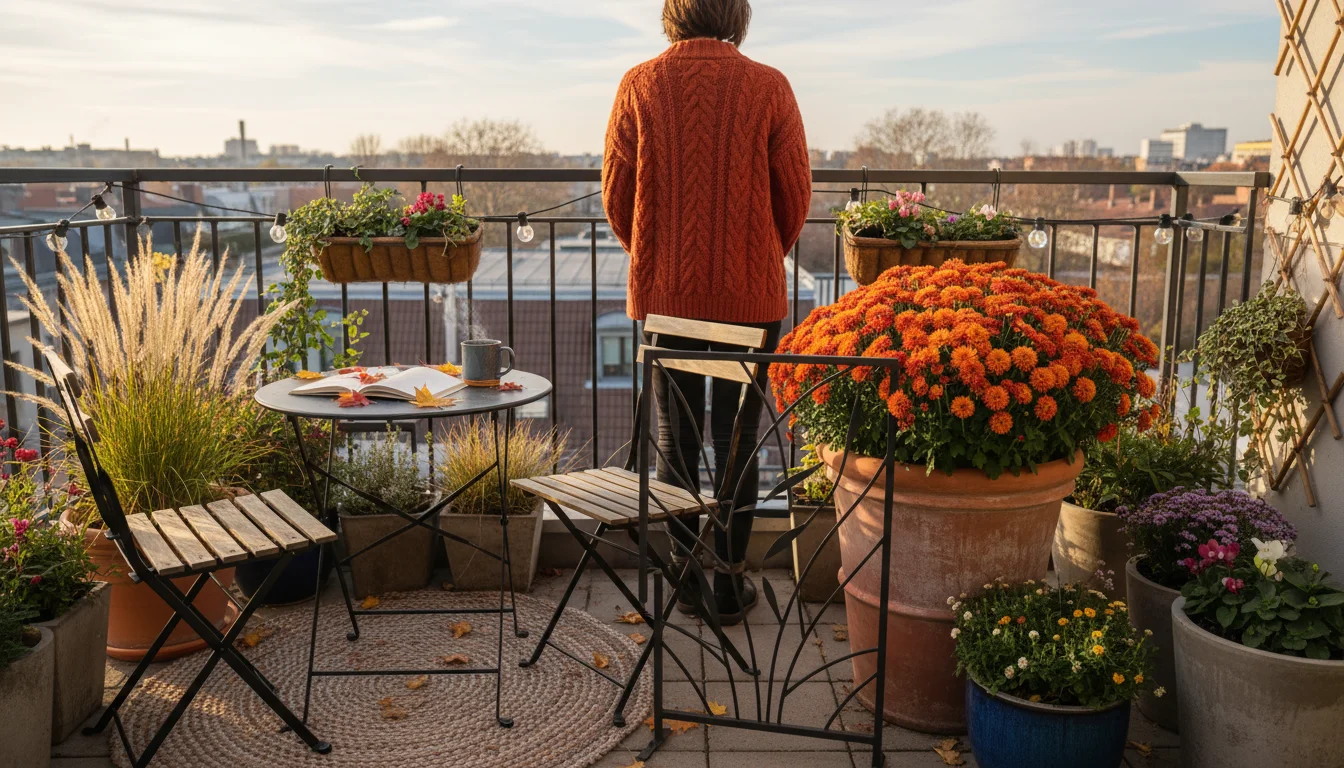
Frequently Asked Questions
What types of fall plants are best for a windy balcony?
For windy balconies, select fall plants with strong, flexible stems, compact growth, and sturdy foliage. Excellent choices include ornamental grasses (like fountain grass), chrysanthemums, ornamental kale and cabbage, pansies, and violas. These plants typically sway with the wind or present a low profile, minimizing damage compared to tall, brittle, or broad-leafed varieties.
How much wind can container plants tolerate before getting damaged?
The tolerance varies greatly by plant species and pot stability. Generally, sustained winds above 20-30 miles per hour (32-48 km/h) can cause significant physical damage, desiccation, and tip over lighter containers. Even moderate breezes of 10-15 mph (16-24 km/h) can cause considerable stress and accelerate water loss. Implementing wind protection measures becomes crucial for any wind-prone balcony.
Can I use plastic sheeting as a temporary windbreak for my balcony?
While plastic sheeting might seem like a quick solution, it is generally not recommended as a long-term windbreak. Solid, impermeable barriers like plastic sheeting can create severe turbulence and damaging eddies on the leeward side of the barrier, potentially causing more harm than good. Furthermore, plastic can tear easily in strong winds and often looks unsightly. Opt for porous materials like bamboo screens, lattice, or shade cloth, which slow down the wind without creating turbulence.
What is the easiest and most cost-effective way to protect my existing lightweight pots?
The easiest and most cost-effective way to protect existing lightweight pots involves two steps. First, add heavy ballast to the bottom of the pots, such as gravel, rocks, or bricks, before adding soil. Second, group your pots closely together, allowing them to shield each other. For added security, use bungee cords or strong twine to anchor individual pots or groups of pots to your balcony railing or other fixed structures. These methods provide significant stability without requiring extensive modifications.
For trustworthy gardening information, visit:
University of Georgia Extension — Gardening, Louisiana State University AgCenter — Lawn & Garden, Mississippi State University Extension — Lawn & Garden and Arkansas Extension — Yard & Garden. These organizations provide expert, research-based advice for gardeners at all levels.
Disclaimer: This article is for informational purposes only and is not a substitute for professional gardening advice. Always consult local extension services or horticulture experts for region-specific guidance.
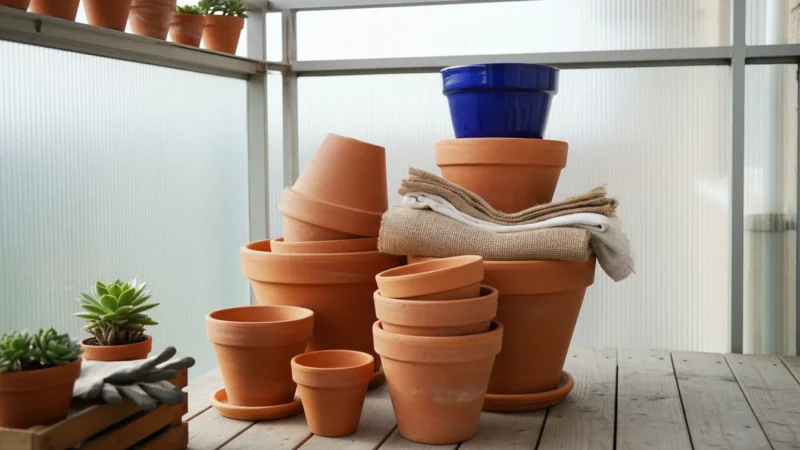
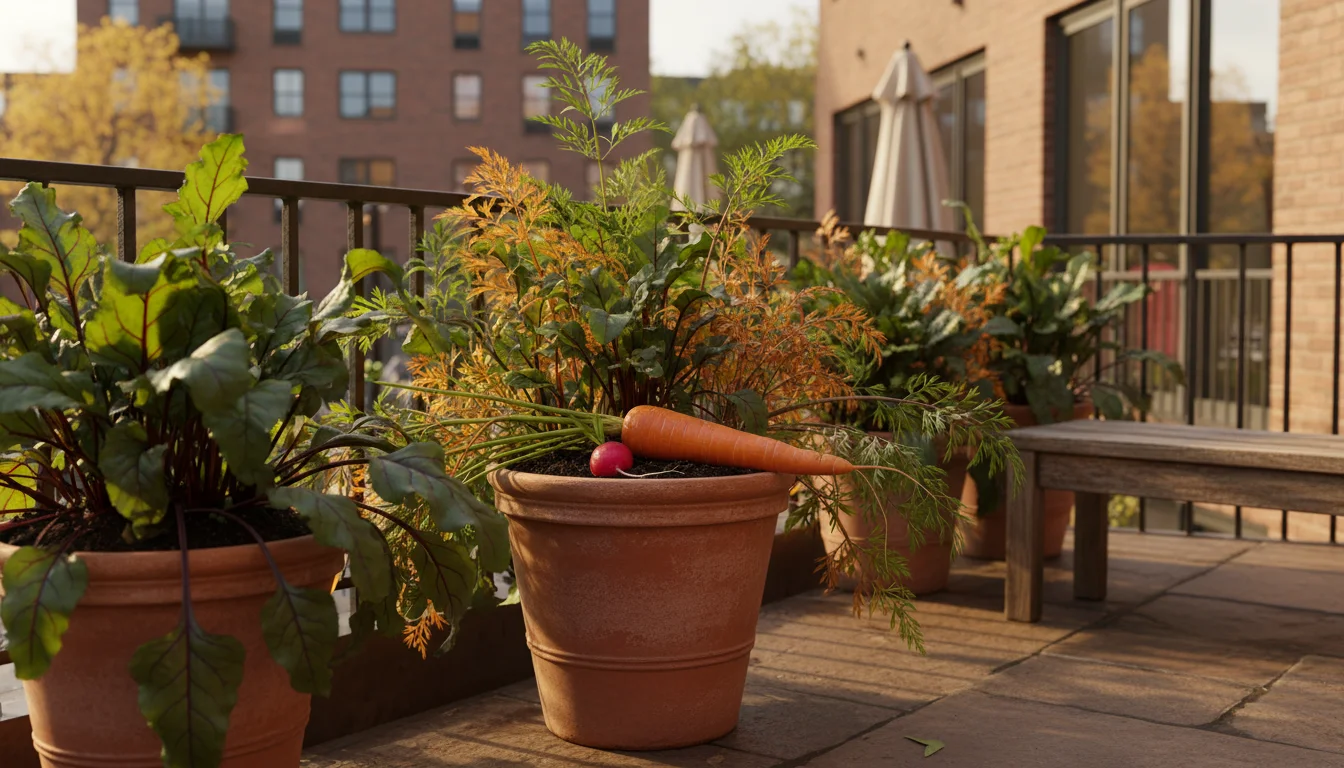
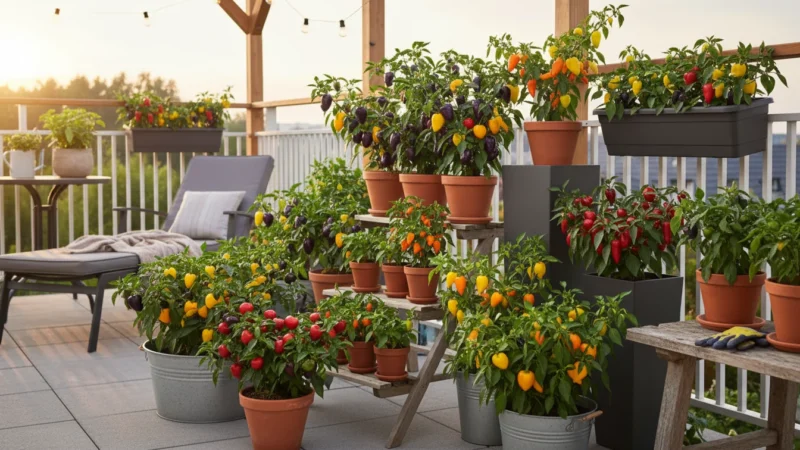

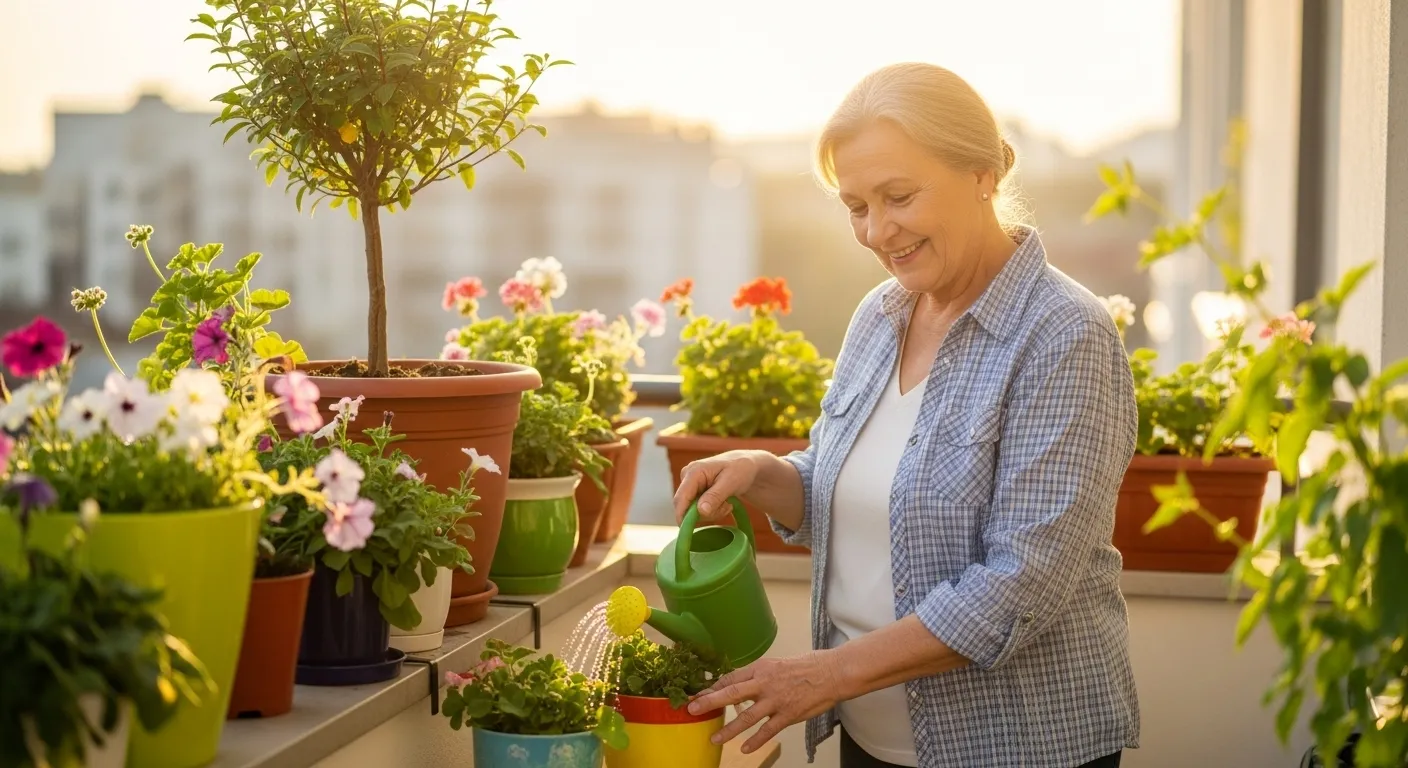
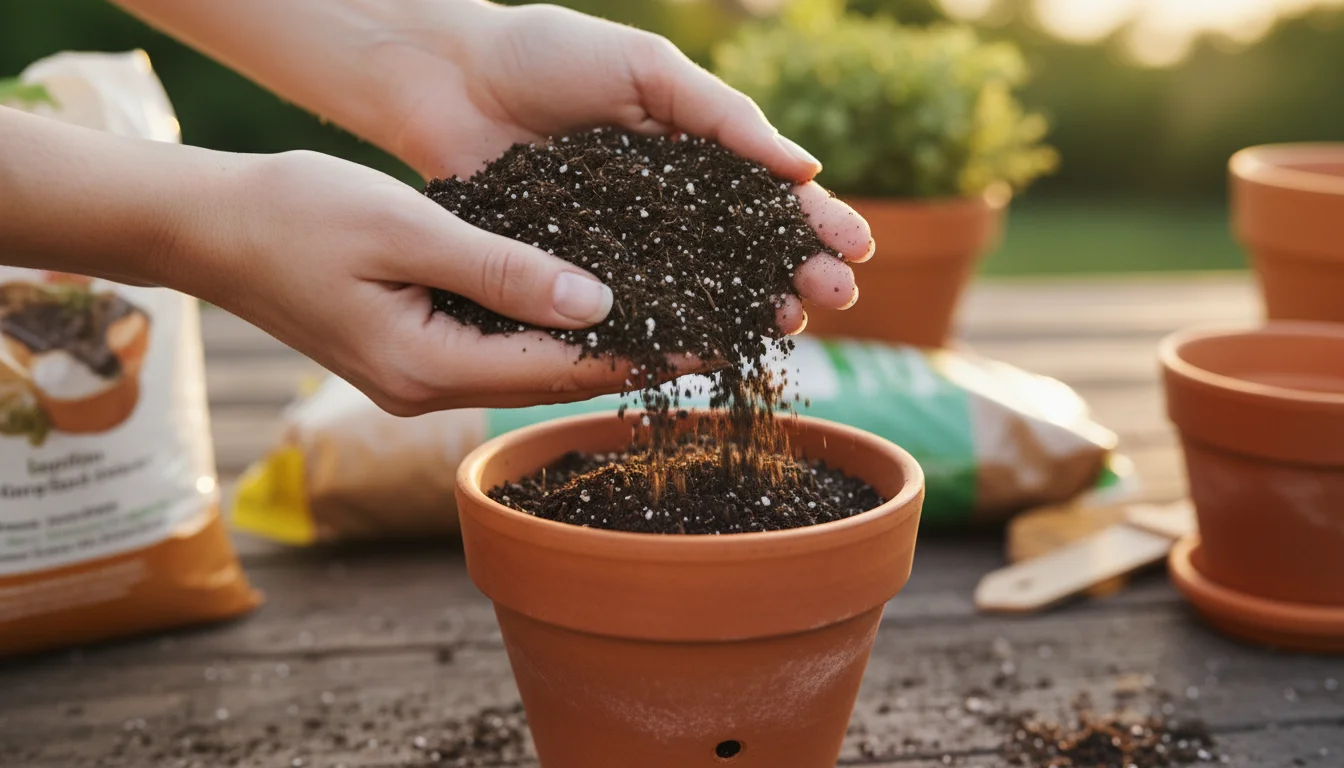

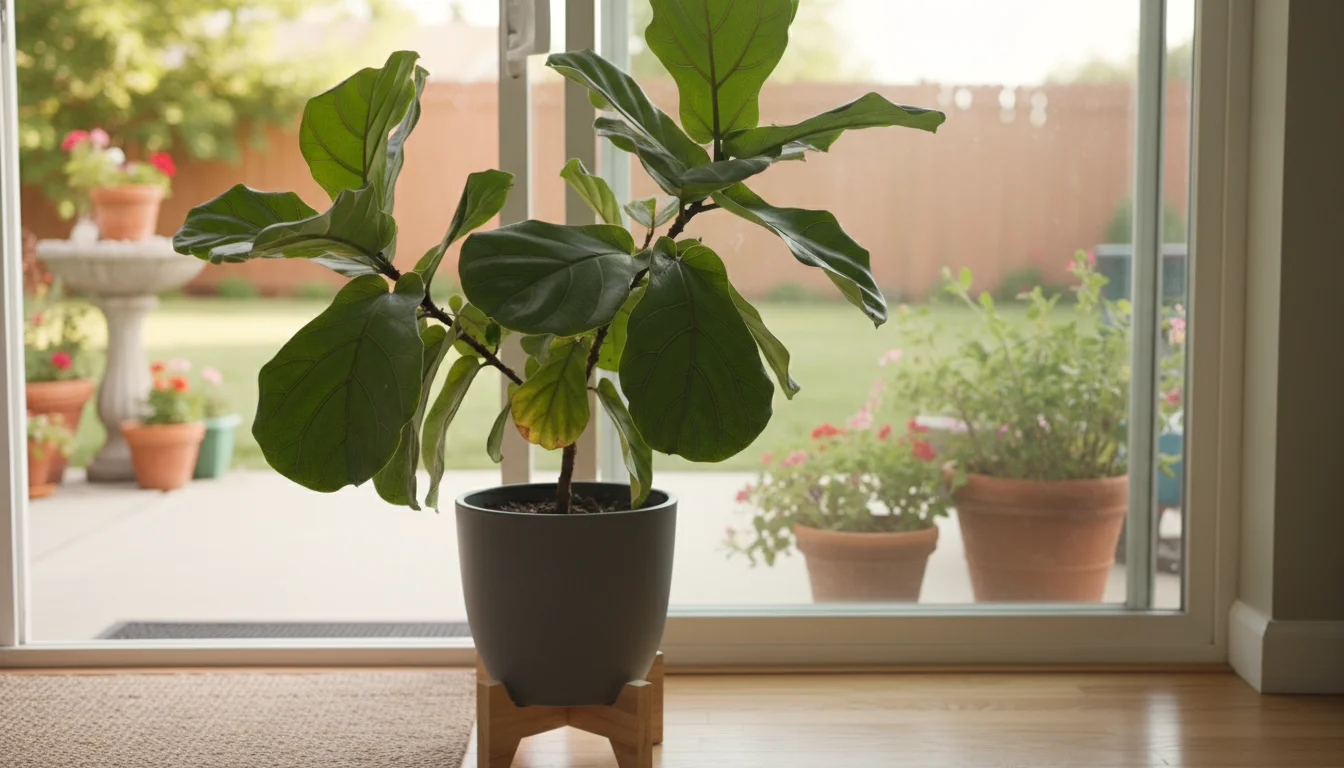
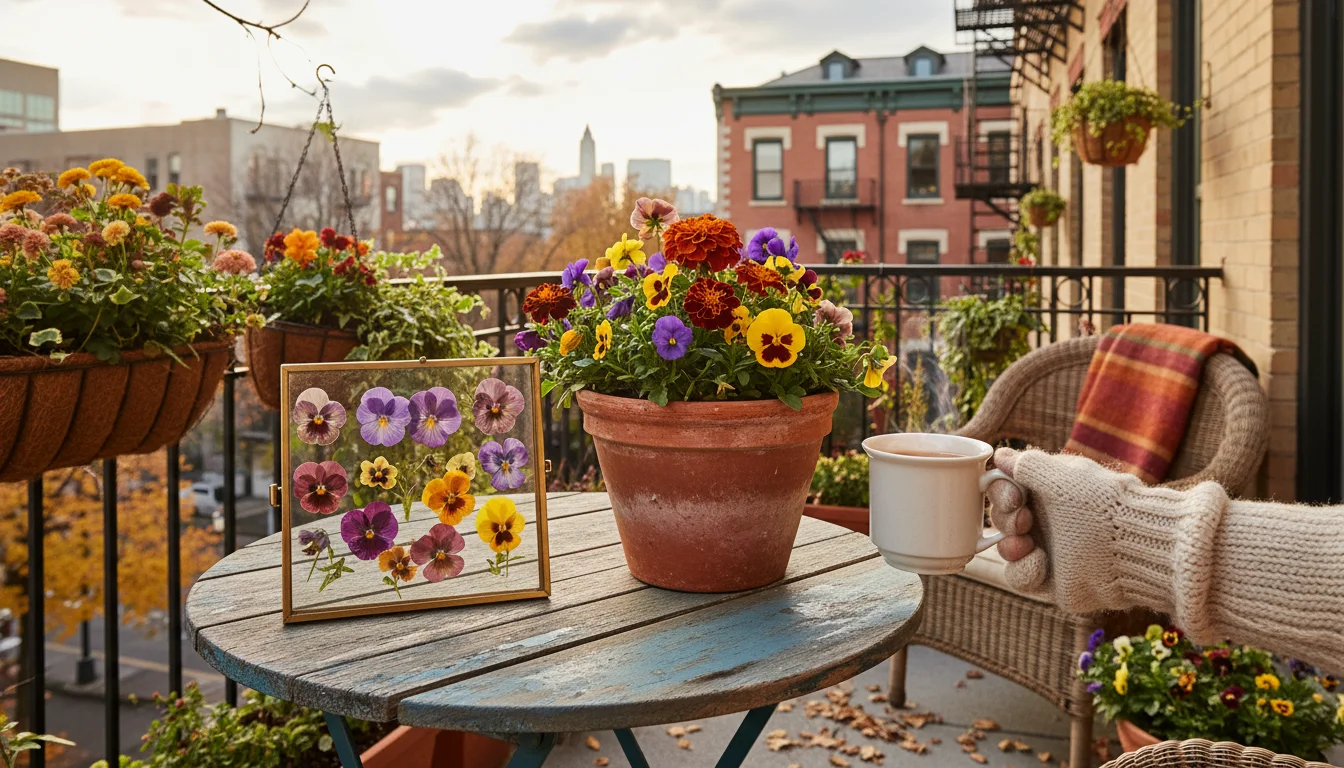
Leave a Reply